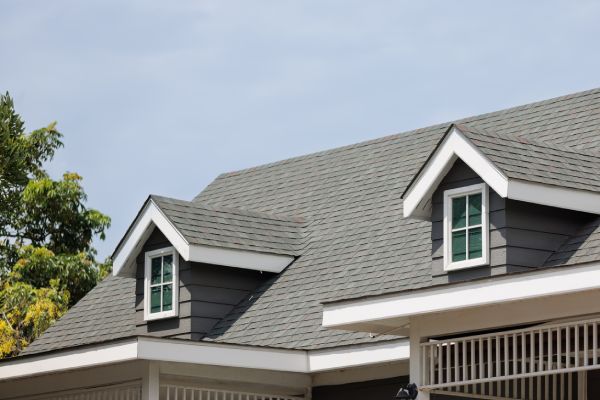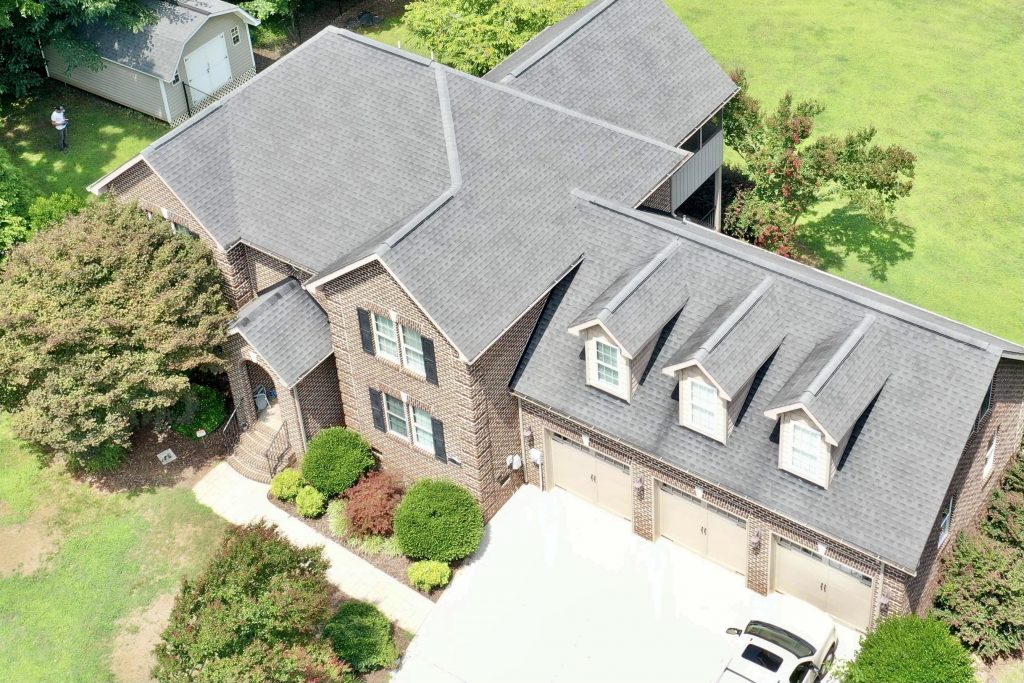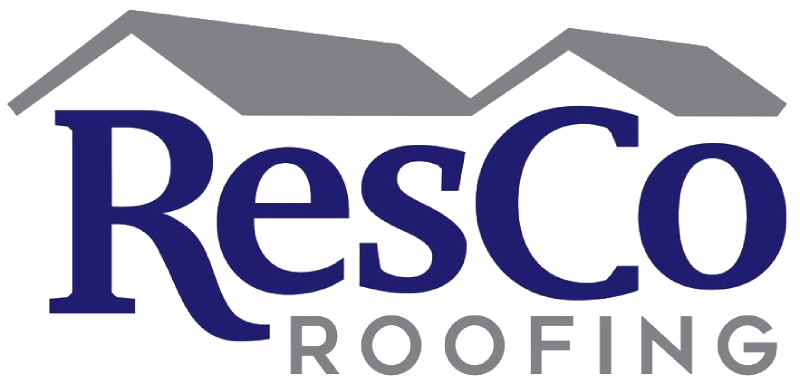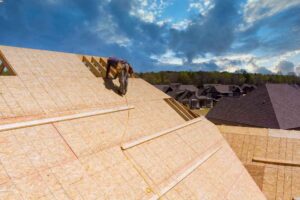Residential Roofs: Protecting Your Home with Style and Efficiency
Residential roofs are the unsung heroes of our homes. They not only protect us from the elements but also elevate the curb appeal and energy efficiency of our homes. With so many roofing options available in the market, choosing the right one can be a daunting task. But, fear not! This blog post is your ultimate guide to residential roofs – from the different types of materials available to the cost and energy efficiency implications of each type. So, whether you’re a new homeowner looking to replace your roof or simply curious about the role of roofs in protecting your home, this post is for you. So, grab a cup of coffee, sit back, and let’s dive into the world of residential roofs!
Basics of Residential Roofs
Residential roofing requires careful consideration of a multitude of factors. From the choice of roofing material to the style and design of the roof, each decision plays a crucial role in enhancing the look and functionality of a home while providing protection and insulation.
One highly popular option for residential roofs is asphalt shingles. These shingles offer durability, affordability, and a wide range of colors and styles to suit any homeowner’s preferences. Another alternative is metal roofing, renowned for its exceptional resilience against weather damage, albeit typically pricier.
But selecting the right roofing material is just one aspect. Ventilation, insulation, and proper installation are equally important. Adequate ventilation contributes to maintaining a wholesome and safe indoor environment, while insulation helps reduce energy costs and enhances overall comfort. By conscientiously considering these factors, homeowners can ensure their residential roof is both appealing and robust, designed to endure the test of time.
Making well-informed decisions about residential roofing entails evaluating various elements. From the materials employed to the intricate details of ventilation and insulation, homeowners can create an engaging, efficient, and long-lasting roof for their beloved abodes.

Understanding Different Types of Roofs and Their Pros and Cons
Residential roofs offer a range of options, each with its own advantages and considerations. Understanding these choices is crucial for homeowners seeking the perfect fit. Let’s delve into commonly used roofing materials, exploring their distinctive characteristics.
- Asphalt Shingles: Affordable and versatile, asphalt shingles come in various colors and styles, allowing homeowners to effortlessly match their homes’ aesthetics. They are a popular yet moderately durable choice, necessitating regular maintenance.
- Metal Roofing: Renowned for their longevity, certain metal roofing models can last up to 50 years. Energy-efficient, they mitigate cooling costs during summer months. However, metal roofs tend to be pricier than alternative options and generate noise during heavy rainfall or hailstorms.
- Clay or Concrete Tiles: Embodying a classic charm with reddish-brown hues, clay or concrete tiles offer a unique aesthetic appeal. These materials boast exceptional durability, often exceeding 100 years. However, their heavyweight requires additional structural support during installation, making them more expensive than asphalt shingles.
- Wood Shingles or Shakes: Crafted from natural wood, these roofing materials impart a rustic charm to any home. They are energy-efficient and environmentally friendly. Nonetheless, they demand regular maintenance and can succumb to rot and insect infestations without proper treatment.
- Slate: Prized for its opulent appearance and durability, slate roofs can endure for over a century. In addition, they exhibit fire resistance and remarkably low maintenance requirements. However, they represent one of the most costly roofing options and necessitate specialized installation.
Remember, your choice of roofing material should align with local climate, weather conditions, your budget, and personal preferences. With meticulous maintenance and precise installation, every roofing option can offer long-lasting protection for your home.
Selecting the Right Material for Your Home’s Roof
When it comes to selecting the perfect home roofing material, there are several factors to consider. Let’s dive deeper into the selection process with a clear understanding of the different residential roofing materials and their pros and cons.
First and foremost, take into account the climate and weather conditions in your area. Certain materials may be better suited for specific weather patterns, ensuring optimum performance and longevity.
Next, consider the aesthetics. Your roof plays a pivotal role in the overall appearance of your home. Choose a material that complements the style and design of your house, enhancing its visual appeal.
Durability and maintenance are crucial factors to think about. Evaluate how much maintenance you are willing to undertake and select a material that aligns with your preferences. Additionally, prioritize materials with excellent durability to ensure long-lasting protection for your home.
Energy efficiency is becoming increasingly important. Look for materials that offer superior insulation properties, helping to reduce your energy costs while ensuring a comfortable living environment.
Of course, budget is an important consideration as well. Take into account your financial means while still meeting all your requirements. Remember that the initial cost is just one aspect, as long-term maintenance and durability play a vital role in the overall value of your investment.
By carefully considering these factors and conducting thorough research on the available options, you can confidently select the ideal roofing material for your home. It’s not just about finding the right fit for now, but also ensuring long-term satisfaction and peace of mind.
Remember, your roof is a significant investment that deserves careful consideration. With the appropriate material choice and proper maintenance, your roof will provide reliable protection and aesthetic appeal for years to come.

Tips for Creating an Eco-Friendly and Efficient Roof Design
Creating an eco-friendly and efficient roof design is of paramount importance in today’s environmentally conscious world. To help you achieve this, here are some tips:
- Opt for sustainable materials: Consider using roofing materials made from recycled or natural products like metal, wood, or clay tiles. These options not only have a longer lifespan but also minimize waste in landfills.
- Prioritize proper insulation: Adequate insulation plays a crucial role in maintaining an energy-efficient home. It helps regulate interior temperature, reducing the need for excessive heating and cooling.
- Embrace green roofs: Why not explore the concept of green roofs, also known as living roofs? These involve growing plants on top of your roof and offer environmental benefits such as improved air quality and stormwater management. Additionally, they provide insulation for your home.
- Harness solar power: Installing solar panels can significantly reduce your energy costs and carbon footprint. Consider integrating them into your roof design for a more eco-friendly and efficient home.
- Choose light-colored roofing materials: Opt for lighter colors as they reflect heat, keeping your home cooler during the summer months. This can help reduce your reliance on air conditioning and lead to energy savings.
By incorporating these tips into your roof design, you can create a sustainable and energy-efficient home. This not only benefits the environment but also contributes to long-term cost savings. Make the most of these strategies to transform your roof into a beacon of sustainability.
Factors to Consider When Choosing a Roofing Professional
When it comes to maintaining the integrity of your roof, selecting a reliable and experienced roofing professional is of utmost importance. With that in mind, here are some essential factors to consider before making this crucial decision:
- Credentials: Prioritize licensed and insured contractors who have met all the necessary requirements and have comprehensive insurance coverage. This not only ensures compliance but also provides protection against potential damages.
- Experience: Look for professionals with a wealth of industry experience. Seasoned contractors are more likely to deliver top-notch workmanship and effectively handle any unforeseen challenges that may arise during the project.
- Reputation: Don’t forget to do your due diligence. Research and read reviews from previous customers to gain valuable insights into a contractor’s reputation and reliability. This will help you assess their ability to meet your expectations.
- Warranty: It’s important to inquire about the warranties offered by different roofing professionals. A reputable contractor will stand behind their work and provide you with a comprehensive warranty that gives you peace of mind.
- Communication and Transparency: Open and honest communication is key to a successful project. Prioritize contractors who communicate clearly and are transparent about the project timeline, costs, and potential issues. This ensures that you are fully informed throughout the process and helps avoid any misunderstandings.
By carefully considering these factors, you can make an informed decision when selecting a roofing professional for your home. Remember, the expertise and reliability of an experienced contractor play a vital role in the long-term performance and maintenance of your roof. It’s an investment worth making.






